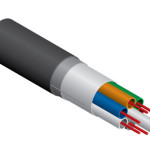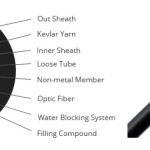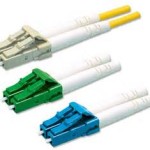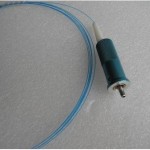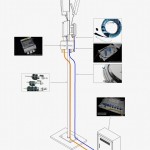The cable jacket provides the first line of defense against the surrounding environment. It resists water
entry while remaining inert to gases and liquids that the cable may be exposed to during its service life. It
provides a smooth, low friction surface for cable placement. The jacket must be made of a material that will
allow the cable to remain flexible and serviceable at all of the temperatures it will experience during its
lifetime.
It must resist abrasion during installation. It must provide, along with the cable’s strength members, the
mechanical strength required to survive its environment and installation forces. For indoor cables, the
jacket also provides the fire retardance required by building codes.
Many different materials are available for cable jacketing making it possible to match the jacket material to
the end user application requirements. The table below provides a listing of some of the more popular
jacketing materials used for optical cables.
PE — 1 Polyethylene (MDPE – medium density PE / HDPE – high density PE)
Features
- Primary outside jacket material.
- Good resistance to UV (sun light) due to carbon black.
- Good flexibility over wide range of temperatures.
- Good abrasion and crack resistance.
PVC — Polyvinyl chloride
Features
- Provides good mechanical protection.
- Flexible at normal installation temperatures.
- Flame retardant.(typical riser material)
- Used for many indoor applications.
- Can be protected against sunlight with various UV inhibitors.
LSZH — Low smoke, zero halogen
Features
- Flame Retardant with low smoke and no halogenated materials
- For use in unventilated areas exposed to public, e.g., subways and tunnels.
- Good mechanical performance.
Most Outside Plant optical cables are made from medium density or high density polyethylene with carbon
black for UV stabilization. In North America the National Electric Code dictates that this type of a cable
jacket cannot penetrate any building by more than 50 feet. A fire retardant, listed cable must be used for
indoor applications. Often a riser rated PVC jacket is used for indoor/outdoor cables that must penetrate
the building more than 50 feet.
